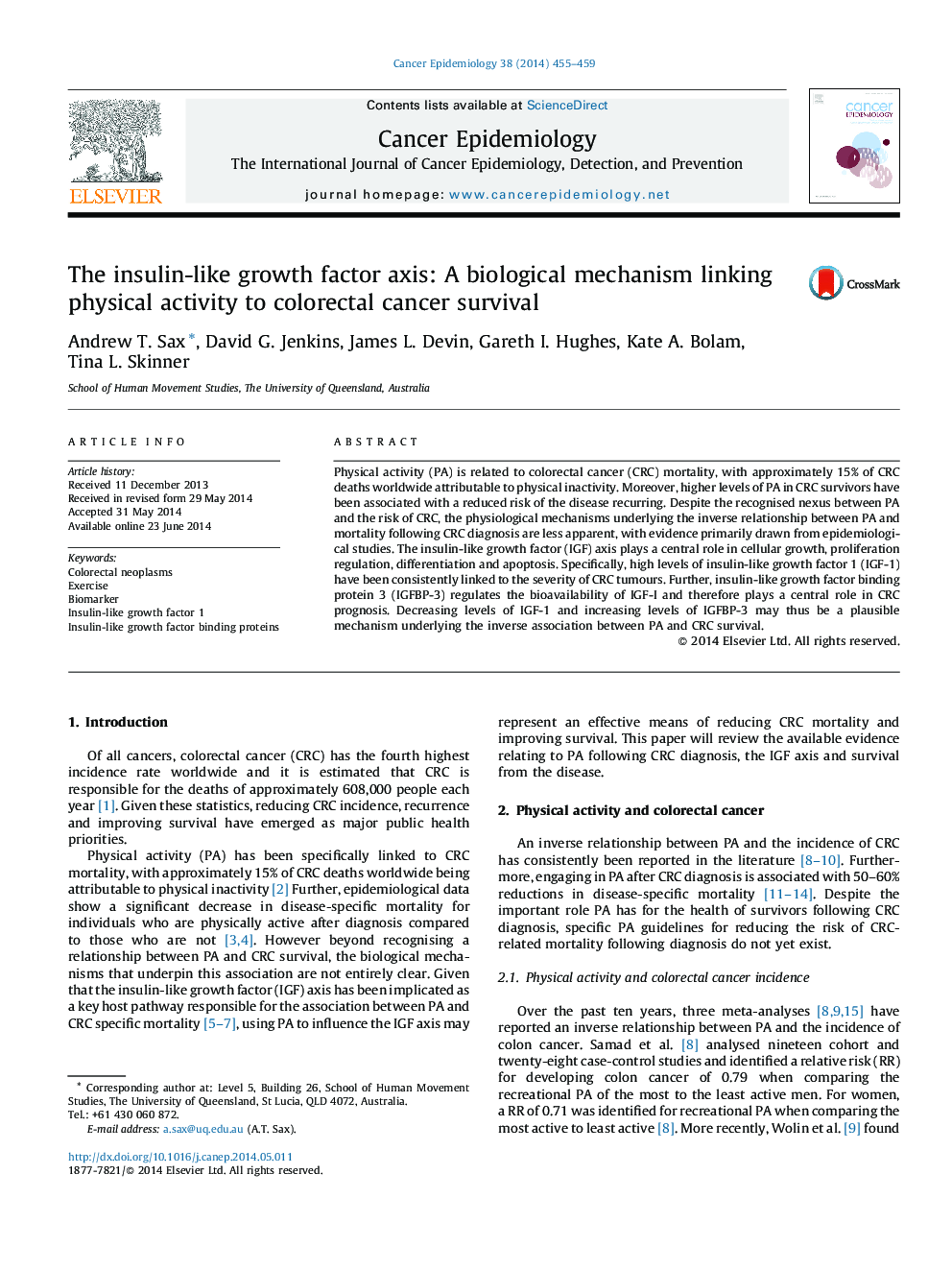| Article ID | Journal | Published Year | Pages | File Type |
|---|---|---|---|---|
| 2109504 | Cancer Epidemiology | 2014 | 5 Pages |
•An inverse relationship between physical activity and survival is reported after colorectal cancer diagnosis.•The insulin-like growth factor axis is a plausible biological mechanism underlying this association.•Epidemiological evidence supports this, however robust interventional studies are lacking.•Specific physical activity guidelines for this population are yet to exist as a result.
Physical activity (PA) is related to colorectal cancer (CRC) mortality, with approximately 15% of CRC deaths worldwide attributable to physical inactivity. Moreover, higher levels of PA in CRC survivors have been associated with a reduced risk of the disease recurring. Despite the recognised nexus between PA and the risk of CRC, the physiological mechanisms underlying the inverse relationship between PA and mortality following CRC diagnosis are less apparent, with evidence primarily drawn from epidemiological studies. The insulin-like growth factor (IGF) axis plays a central role in cellular growth, proliferation regulation, differentiation and apoptosis. Specifically, high levels of insulin-like growth factor 1 (IGF-1) have been consistently linked to the severity of CRC tumours. Further, insulin-like growth factor binding protein 3 (IGFBP-3) regulates the bioavailability of IGF-I and therefore plays a central role in CRC prognosis. Decreasing levels of IGF-1 and increasing levels of IGFBP-3 may thus be a plausible mechanism underlying the inverse association between PA and CRC survival.
